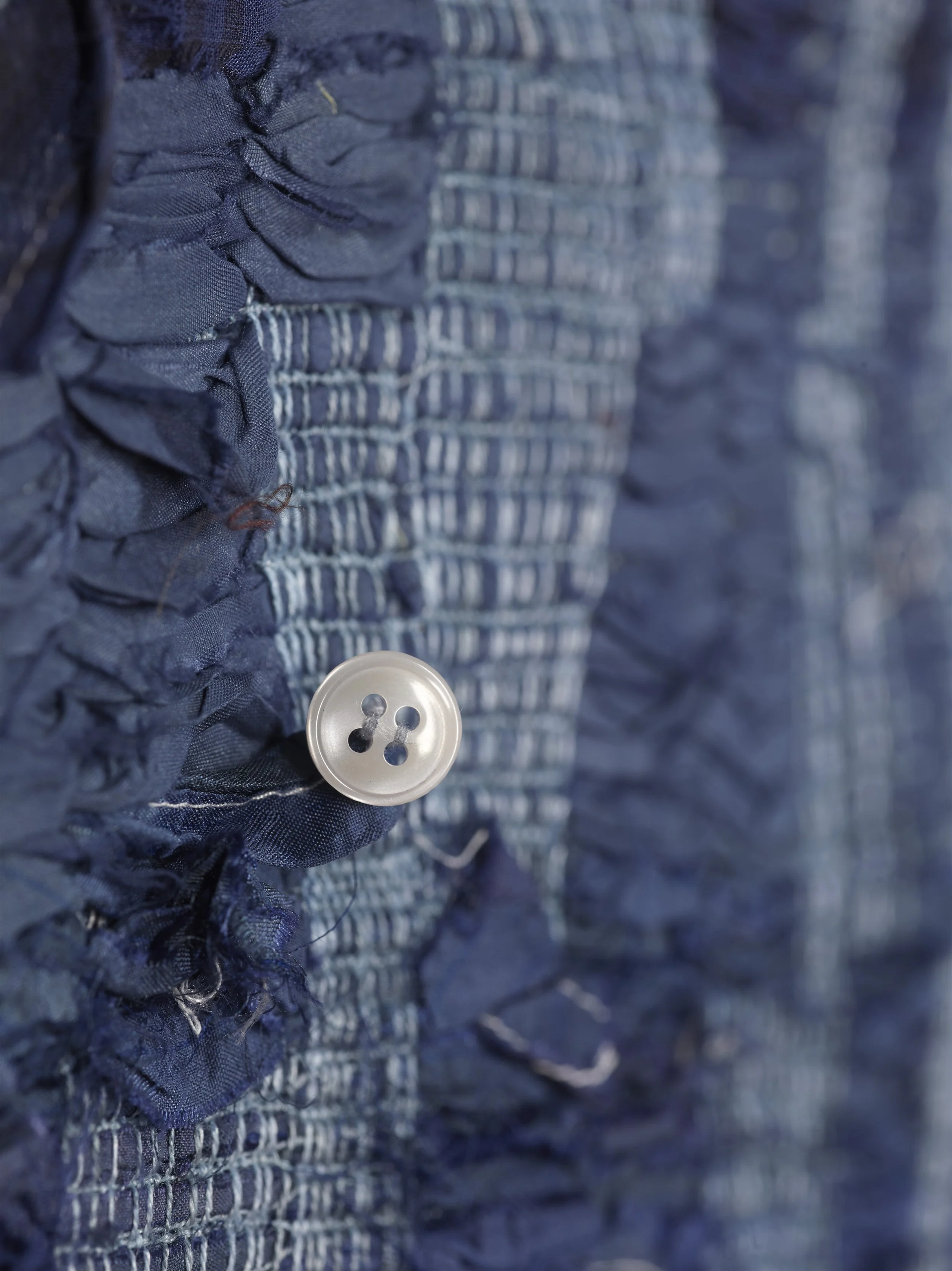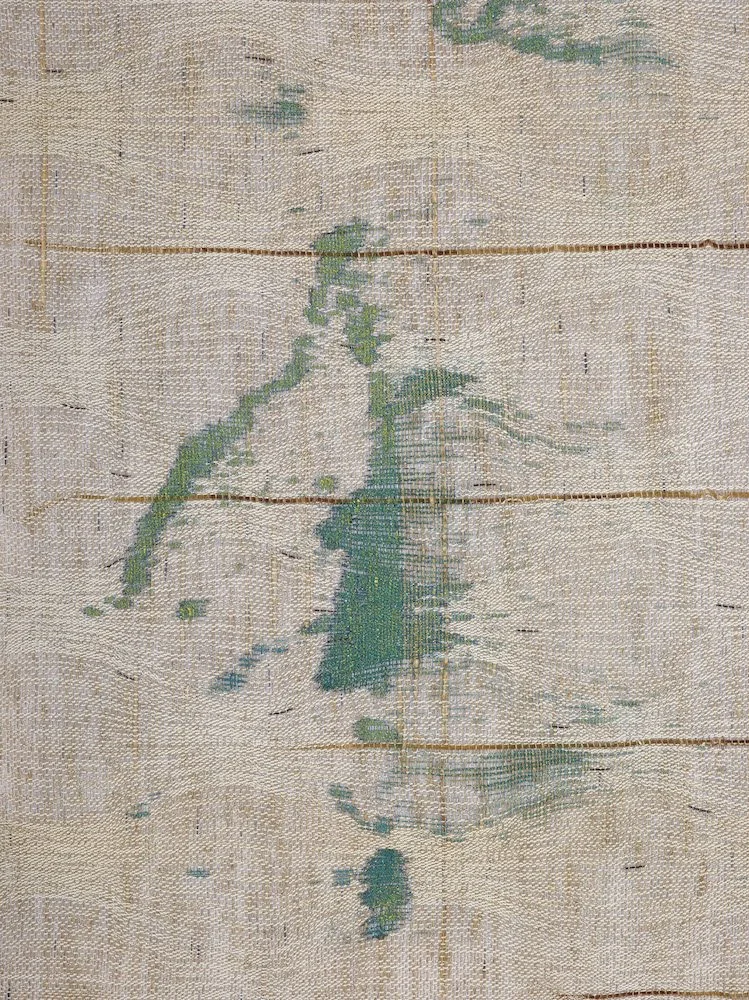The spark for almost every textile I create stems from questions pertinent to my connection with the flux between land and sea. Questions of impermanence and purpose are part of the human predicament, and I balance this uncertainty by beginning each weaving project from a place of experiential understanding.
Using a rare hand-weaving technique called ondulé, I maneuver threads out of the strict grid and into wave-like patterns and lines. The resulting contemplative fields of woven work uphold a minimalist aesthetic, with high regard for restraint. Physically, the process of moving with the loom mimics the movement of the tides. Aesthetically, ondulé weaving enables me to capture the fluidity and textures in the visual vocabulary I amassed during my solitary childhood roaming the shores and islands along the North Atlantic. Undulating waves of the ocean, tidal patterns in the sand, and especially the distant horizon.
Statements on Specific Works
Aino’s Tresses
Handmade paper of cotton and seaweed (bladder wrack), silkscreen printed. Dimensions 23” x 27”
Six panels of handmade cotton and seaweed paper are silkscreen printed with a rushing, roiling sea surface. The title “Aino’s Tresses” references the epic Finnish poem The Kalevala, in which the beautiful maiden Aino drowns herself in the ocean to avoid an arranged marriage.
“All the waters in the blue-sea
Shall be blood of Aino's body;
All the fish that swim these waters
Shall be Aino's flesh forever
All the willows on the sea-side
Shall be Aino's ribs hereafter
All the sea-grass on the margin
Will have grown from Aino's tresses.”
Sea and Sky Studies
The gestural sketches in this group express a few of the infinite weather-moods at sea. The small drawings are executed on silk cloth that has been stiffened with a starching product that creates a vellum-like quality. The pieces are dipped in indigo dye and allowed to dry. Before or after the dyeing, charcoal or other materials may be introduced. The marks are softened through the transparency of the material. Edges have been singed with flame, as if pages have been torn from a long-lost journal.
Store Cloth Series
The evolution of woven cloth from historical Appalachian homesteads to disposable “fast-fashion” is expressed in this series of woven panels, recognizing the shifting value of cloth. The panels are handwoven in variations of the Double Bow Knot pattern, using discarded industrially made garments. The ondule´ technique of waving threads further distorts this historically relevant pattern, echoing the contemporary perception of woven cloth as ubiquitous and undervalued.
The term ‘store cloth’ was used to describe commercially woven cloth after the end of the Civil War. The availability of commercially woven cloth started the decline in hand weaving- from nearly every Appalachian homestead using a floor loom for hand weaving, to a near-extinction of the craft.
In 1895 a revival of hand weaving in the mountains was inspired when Francis Goodrich was gifted a hand woven overshot coverlet in the traditional Double Bow Knot pattern. (Alvic, 2009) Goodrich’s efforts contributed to the rebirth of hand weaving among women of Appalachia for economic purposes.
Today, massive amounts of commercially woven cloth are produced each day across the globe. Much of this cloth becomes clothing- a multi-trillion dollar industry. (Green Zone, 2016) This cloth is made so quickly, cheaply and in total excess that it is considered, even at times designed to be disposable. The ‘bins’ at Goodwill Industries in Asheville is a last stop for discarded garments and these are sold by the pound. That which is not sold here will be crated for shipment to other countries.
Sources:
Alvic, Philis. Weavers of the Southern Highlands, University of Kentucky Press, 2009.
http://www.greenzonenc.com/waste-couture/, blog post June 13, 2016.
Disappearing Islands
“Disappearing Islands” is a body of artwork that addresses the issue of sea level rise, and serves as a personal meditation on the impermanence of all things. Developing woven art that draws on coastal and ocean themes helps to keep me connected to my heritage and my homeland, which feels increasingly important as my parents age and my siblings build families of their own. The series began at Penland School of Craft during summer 2017 and quickly informed a series of larger “canvases” that are handwoven in the ondulé method, and incorporate natural dyes, textile paint, embroidery and other techniques.



